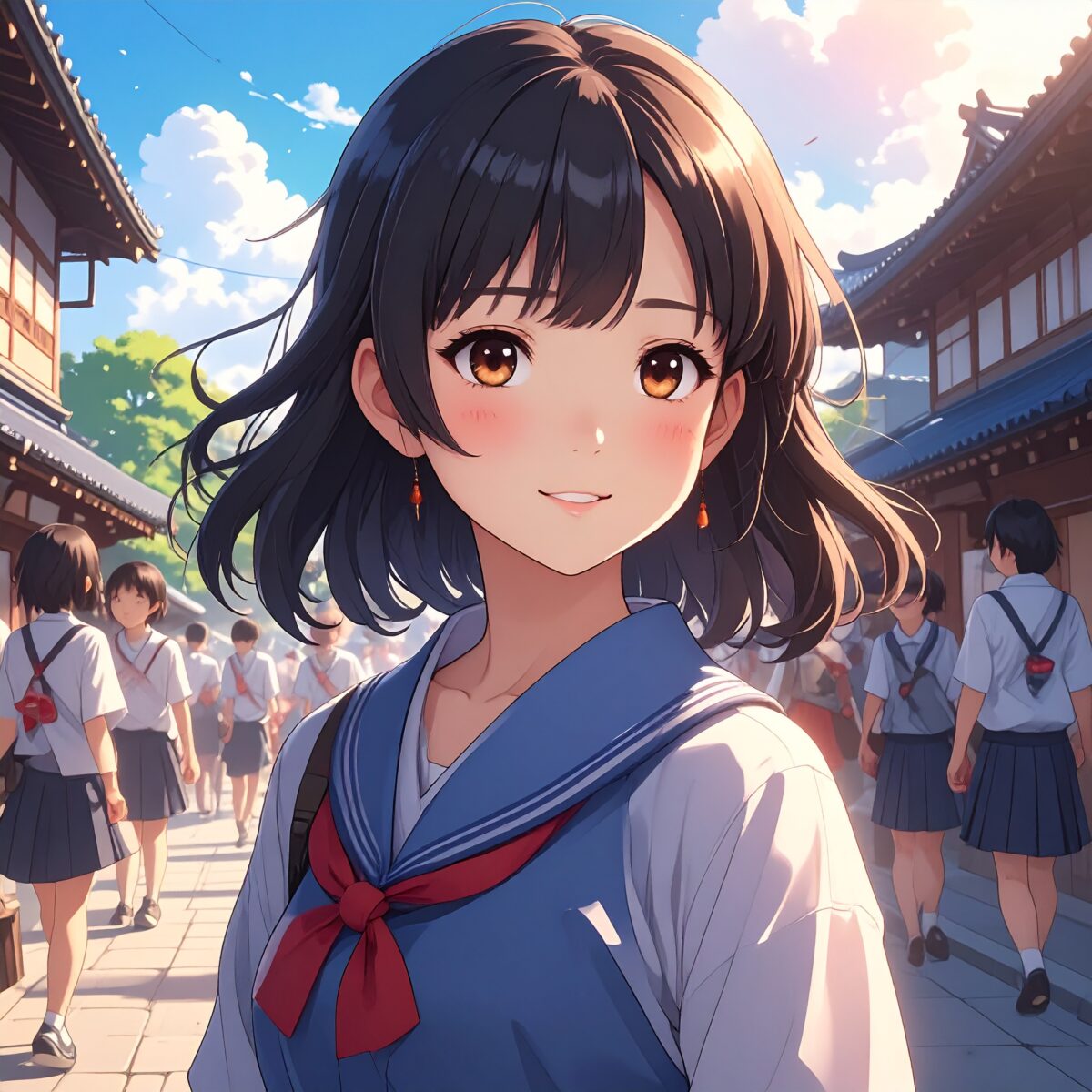There is something uniquely captivating about the school uniforms worn by Japanese high school girls. Whether in sailor suits or blazers paired with ribbons or neckties, combined with loose socks, cardigans, or other personal touches, this iconic “JK style” has fascinated people both in Japan and abroad. More than just a school dress code, it has evolved into a fashion statement—a cultural phenomenon now embraced worldwide.
Though each school has its own uniform design, they share a common aesthetic of cleanliness, order, and subtle beauty. Students may fasten their buttons neatly and carefully monitor skirt length, yet they also find creative ways to express individuality within these constraints—by decorating their bags with charms, styling their socks, or layering knitwear. These small acts reflect a quiet but persistent search for self-expression within a defined framework.
The rise of JK style extends far beyond Japan’s borders. Through anime, films, music, and social media, the image of the uniformed Japanese schoolgirl has become a symbol of youth, purity, and fleeting beauty—aesthetic values deeply embedded in Japanese culture. Uniforms in such media often go beyond function, serving as narrative tools that express a character’s inner world and emotional state.
Among young people overseas, admiration for Japanese uniforms is steadily growing. Experiences that allow tourists to rent and wear school uniforms while walking the streets of Japan are increasingly popular. Meanwhile, JK-inspired outfits are appearing in street fashion scenes across the globe. What was once simply school attire has become a global icon—an expression of Japanese aesthetics, identity, and daily life.

What makes Japanese school uniforms truly fascinating is their dual nature—they are both everyday and extraordinary. In Japan, they are simply the clothes worn to school, a common sight at morning train stations or along city streets in the late afternoon. Yet what is ordinary to those who live it becomes something remarkably special through the eyes of the world. Within this contradiction lies a story that transcends fashion—a subtle tension between discipline and freedom, tradition and creativity.
The uniform is also a reflection of Japanese education and society at large. It embodies the values of functioning within a group, presenting oneself neatly, and respecting time and structure. These lessons are quietly reinforced each day through the act of wearing a uniform. At the same time, students find space for personal expression—adjusting skirt lengths, choosing cardigans, or customizing accessories. This balance between conformity and individuality is perhaps what makes the JK style so universally appealing.
Wearing a uniform is not simply about following a dress code. It is a lived experience of expressing one’s identity while being part of a larger whole. The feelings and memories woven into each uniform eventually become keepsakes—captured in photographs or held in memory long after graduation. It is this fleeting beauty, this quiet poignancy, that resonates deeply with people around the world.
The moment “JK style” became culture was not when it appeared in media or on runways—it was when the image of a uniformed student left a lasting impression in someone’s heart. Japanese school uniforms quietly yet powerfully communicate the extraordinary that lies hidden within the everyday.




